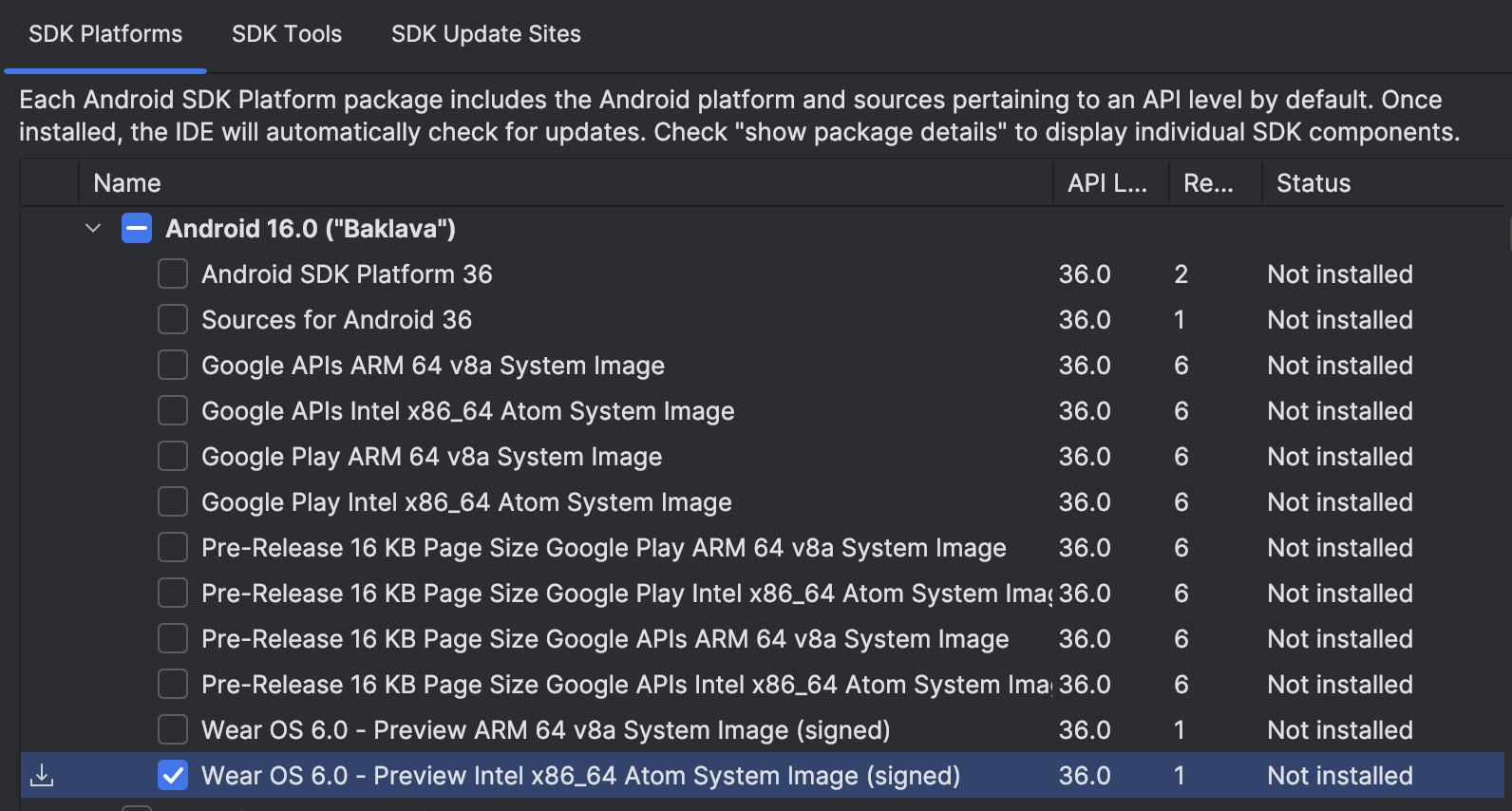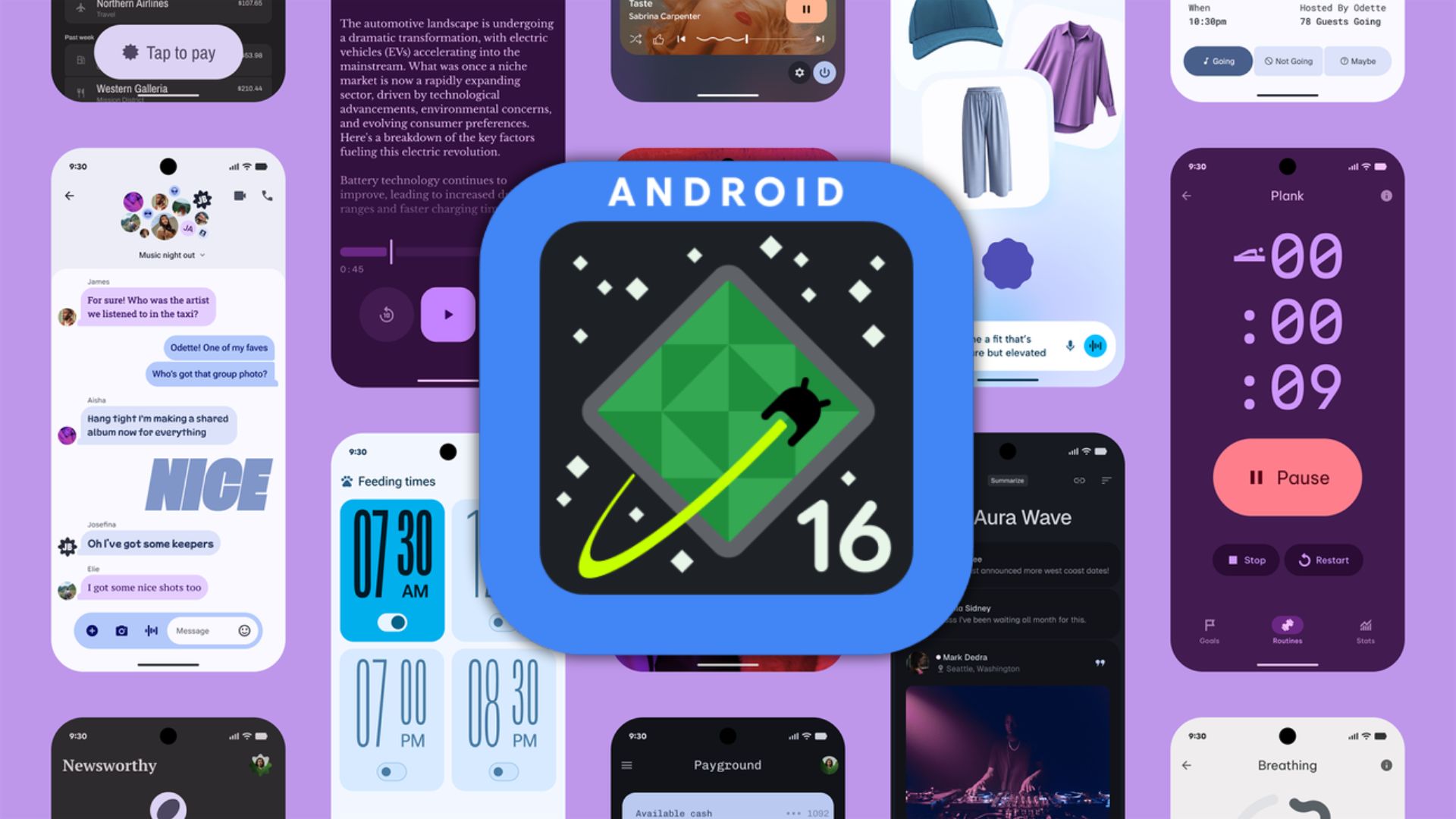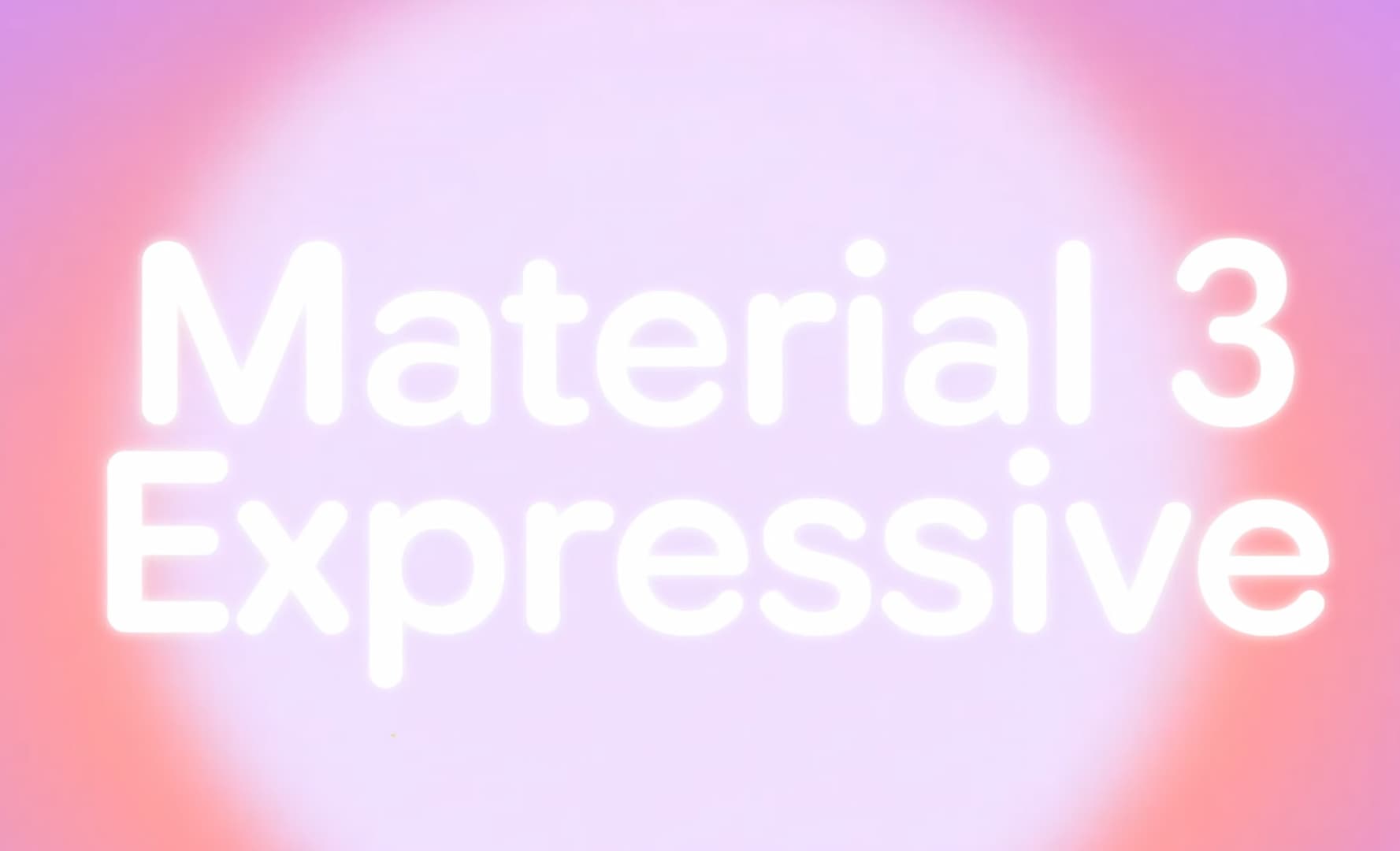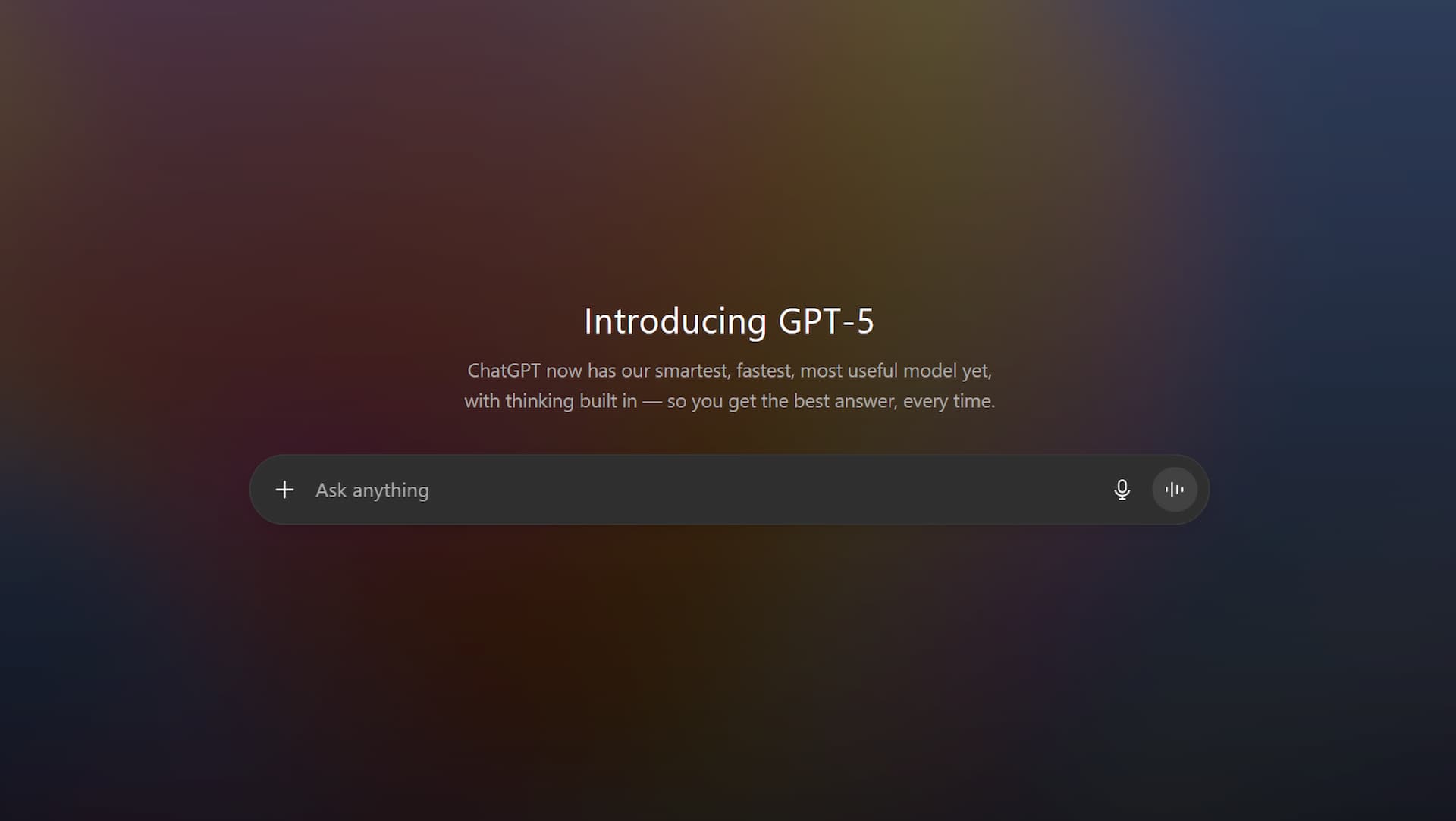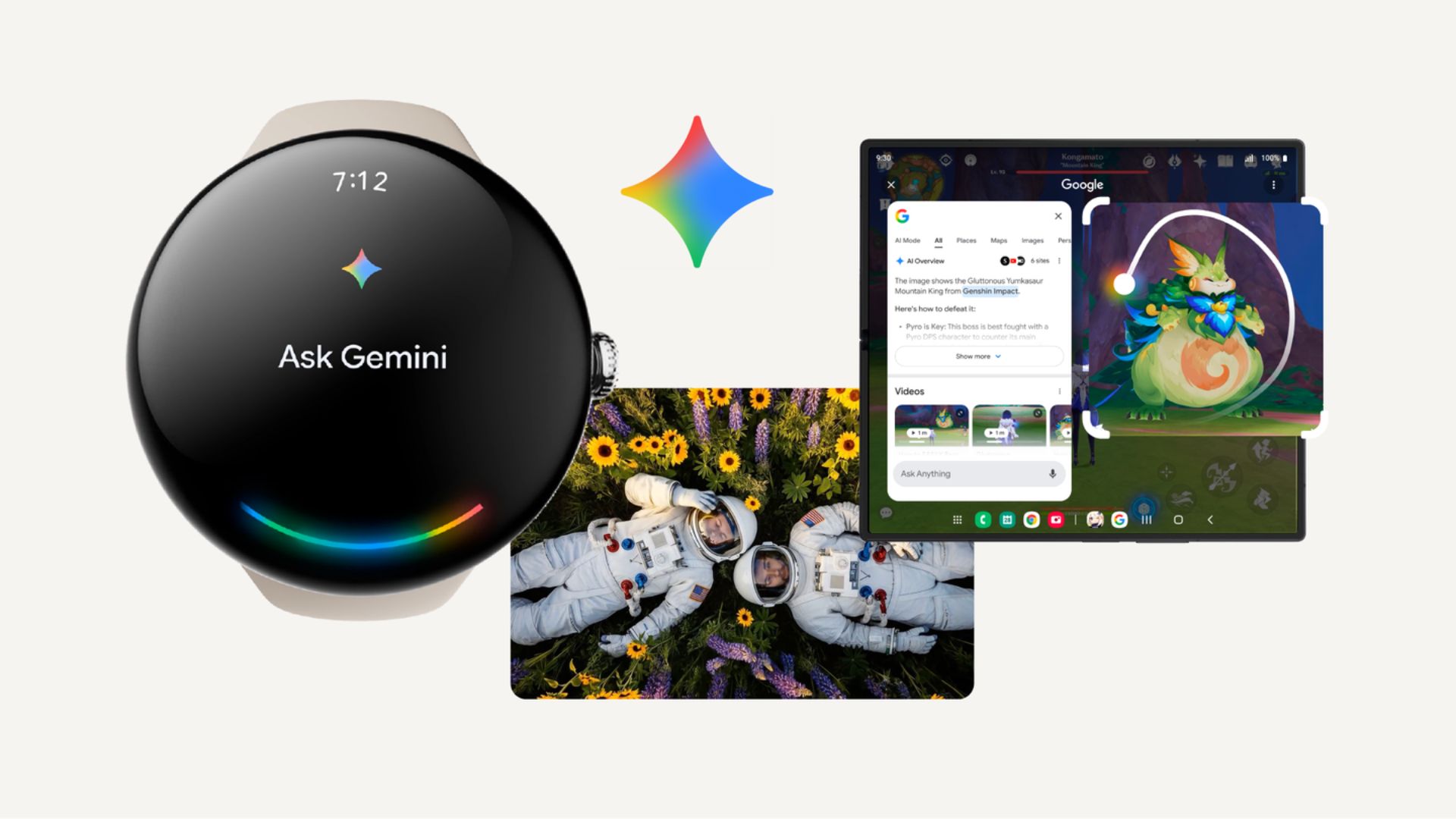Download Wear OS 6 with Android 16, Material 3 Expressive, and Gemini AI
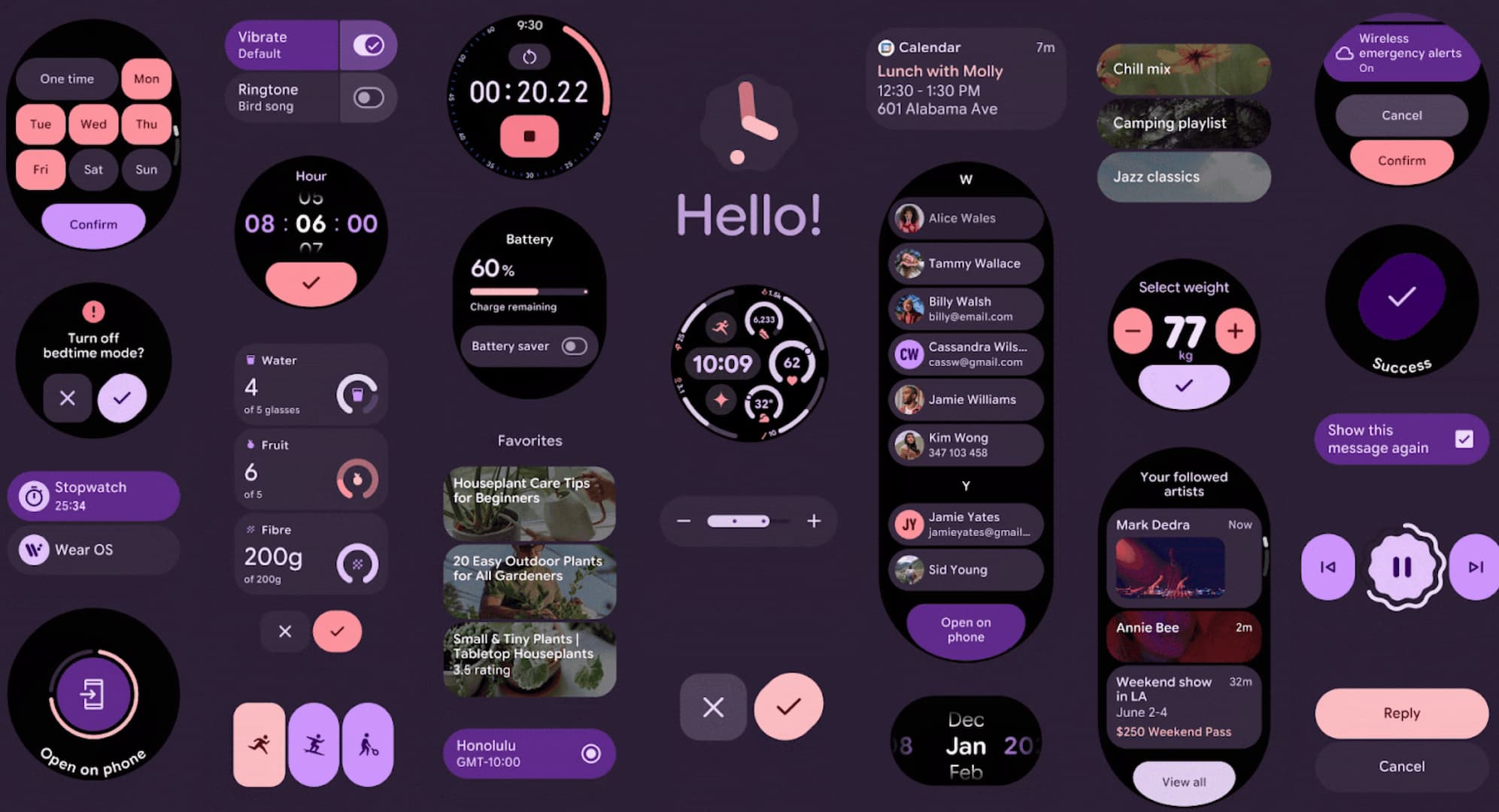
Google just concluded the I/O 2025 and released Android 16 for phones and Wear OS 6 featuring Material 3 Expressive for wearable devices. Wear OS 6 based on Android 16 Baklava can now be downloaded and tested with the first developer preview, providing a glimpse into the future of Wear OS.
Today, Google released the first Wear OS 6 developer preview, which you can try using Android Studio Narwhal. Unfortunately, you won’t be able to run it on an actual Pixel Watch, as it’s just a preview of the next-gen OS for Android Wear. Using Android Studio, you can emulate a Pixel Watch and try the new Wear OS update.
Wear OS 6 focuses on Material 3 Expressive design, 10% better battery life, enhanced components for round displays, improved security with passkeys, and updated developer tools for creating exceptional smartwatch experiences. It also brings new in Watch Faces including Facer, IMEFLIK, WatchMaker, Pujie, and Recreative
Wear OS 6 Features
Smartwatch enthusiasts and developers have something exciting to look forward to with Google’s latest announcement at I/O 2025. Wear OS 6 is officially on the horizon, bringing significant improvements to both aesthetics and performance. This major update introduces Material 3 Expressive design language to the wearable platform while simultaneously improving battery efficiency by up to 10%. Let’s see what makes this update so significant and what users need to know.
Material 3 Expressive
Wear OS 6 introduces Material 3 Expressive, a fresh design system that takes full advantage of the circular display format found on most smartwatches. This isn’t just a visual refresh—it’s a complete rethinking of how users interact with their wearable devices.
The new design language prioritizes personalization, offering users experiences that feel more modern, relevant, and distinct. What makes this particularly exciting is that Material 3 Expressive isn’t limited to Wear OS—it’s coming to Android and all Google apps across these platforms later this year, creating a cohesive ecosystem experience.

Dynamic Color Theming
One of the most visually striking features of Material 3 Expressive is the introduction of dynamic color theming. This automatically generates a color scheme for apps and tiles that matches the colors of the watch face (currently confirmed for Pixel watches). This feature creates a more unified, personalized experience that adapts to user preferences without any additional configuration.
Apps using the new Wear Compose Material 3 and Wear ProtoLayout Material 3 libraries will benefit from:
- Updated and extended color schemes
- Refined typography and shapes
- Automatic alignment with the system font (on Wear OS 6+ devices)

Gemini for Wear OS
The biggest change is Gemini assistant coming to smartwatches. Google officially announced that Gemini is replacing the legacy Google Assistant on Android phones, Wear OS, Android Auto, and even Android TV/Box.
Take a look at Gemini working on Wear OS:
Gemini is coming to your Wear OS smartwatch sooner than later with natural talking language. No need for awkwardly typing into a tiny watch screen or tap every time you want the buggy assistant to work.
Gemini can connect to your apps. So you can ask about anything, including opening times of a restaurant, about emails you sent to your friends and get the answer right on your wrist — without needing to pause the work you are doing and pull out your phone.
Enhanced User Experience with Improved Components
Edge-Hugging Button
The new EdgeButton component is specifically designed for circular displays, hugging the edge of the screen to maximize the available space. This intuitive design comes in four standard sizes and represents a clever solution to the unique challenges of designing for a round interface.

Transforming Lists with Fluid Motion
The TransformingLazyColumn introduces expressive motion that follows the contours of the circular display. This component allows for customizable collapsing behaviors when scrolling, with elements like cards scaling down as they approach screen edges—creating a more intuitive visual hierarchy.
Complementing this is the new ScrollIndicator, featuring refined visual and motion design to help users better visualize their progress through lists. This indicator appears by default when using TransformingLazyColumn and ScreenScaffold components.
Three-Slot Tile Layout
To improve consistency across the Tiles carousel, Wear OS 6 introduces a standardized three-slot tile layout:
- A title slot at the top
- A main content section in the middle
- A bottom slot for additional functions
This structured approach works seamlessly across different screen sizes while making information more glanceable and improving the user’s ability to take quick actions.

Performance Improvements
Perhaps one of the most welcome aspects of Wear OS 6 is that all these visual enhancements don’t come at the expense of battery life. In fact, Google claims that watches updating from Wear OS 5 to Wear OS 6 can see up to 10% improvement in battery life thanks to platform optimizations.
This addresses one of the long-standing challenges with smartwatches—balancing rich functionality with the need for all-day battery life. Users no longer need to choose between attractive visuals and longer time between charges.
Developer Tools and Resources
For developers looking to embrace these new capabilities, Google has released:
- Developer Preview of Wear OS 6 (based on Android 16)
- Updated Wear OS 6 emulator for testing app compatibility
- New design guidance specifically for Wear OS
- Figma design kits to support implementation
- Updated Jetpack libraries:
- Wear Compose Material 3 for app components
- Wear ProtoLayout Material 3 for tiles components
The ProtoLayout library has received significant upgrades, including support for Lottie animations, new gradient types, arc line styles, and more idiomatic Kotlin syntax that better aligns with Jetpack Compose.
Watch Face Enhancements
Watch face developers haven’t been forgotten in this update. Wear OS 6 brings version 4 of the Watch Face Format, offering new customization options including:
- Animated state transitions between ambient and interactive modes
- Support for photo watch faces
- A new API for building watch face marketplaces
Google partnered with well-known watch face developers including Facer, TIMEFLIK, WatchMaker, Pujie, and Recreative in designing this new API. All of these developers will be bringing their unique watch face experiences to Wear OS 6 using Watch Face Push.

From left to right, Facer, Recreative and TIMEFLIK watch faces have been developing marketplace apps to work with watches running Wear OS 6.
These additions provide watch face creators with more tools to deliver unique, personalized experiences to users.
Security and Authentication Improvements
Starting with Wear OS 5.1 on Google Pixel Watch devices (and continuing in Wear OS 6), the CredentialManager API introduces passkeys to Wear OS with a platform-standard authentication UI.
This unified API simplifies implementation for developers while providing users with consistent authentication experiences. The system supports passkeys, passwords, and Sign in With Google, while still allowing developers to maintain other authentication solutions as backups.
Most importantly, this enables users to authenticate directly from their watch without needing their phone nearby—a significant step toward making smartwatches more independent devices.
Enhanced Media Controls
Users listening to media content will appreciate the enhanced controls available on devices running Wear OS 5.1 or later:
- Fast-forward and rewind functionality for podcasts
- Access to playlists through a new menu
- Additional controls for shuffle, like, and repeat options
Developers with existing implementations of action buttons and playlists will benefit from these features with minimal additional effort.
Galaxy Watch for Kids
Earlier this year, Samsung expanded the Wear OS ecosystem with Galaxy Watch for Kids, a phone-free experience designed specifically for children. This unique implementation of Wear OS allows children to explore the platform independently while giving families new ways to stay connected.
Google has provided specific developer guidance for creating Wear OS applications tailored to younger users, opening up new audience segments for developers to target.
How to install Wear OS 6?
The only way to access Wear OS 6 is via the official Android Studio emulator. It is only meant for developers to test their apps, stability, and compatibility.
- Download the latest release of Android Studio Narwhal Feature Drop if you haven’t done so already.
- Wait for Android Studio to download and install the system image, and then click Finish.
- In Android Studio, click Tools > SDK Manager.
- In the SDK Platforms tab, expand the Android 16.0 (Baklava) section and select either Wear OS 6 – Preview ARM 64 v8a System Image or Wear OS 6 – Preview Intel x86_64 Atom System Image:

- The SDK Manager page where you can choose the emulator system image to download and install.
- Click OK. When the Confirm Change window appears, click OK again.
- Click Next and then click Finish.
Looking Forward
Wear OS 6 addresses both aesthetic and practical concerns. The introduction of Material 3 Expressive brings a fresh, modern look to the platform while platform optimizations deliver improved battery life—a win-win for users.
For developers, the new tools and libraries make it easier than ever to create beautiful, functional experiences optimized for the wrist.
The general availability of Wear OS 6 is expected later this year, giving developers time to update existing applications or create new experiences that take advantage of the platform’s new capabilities.


